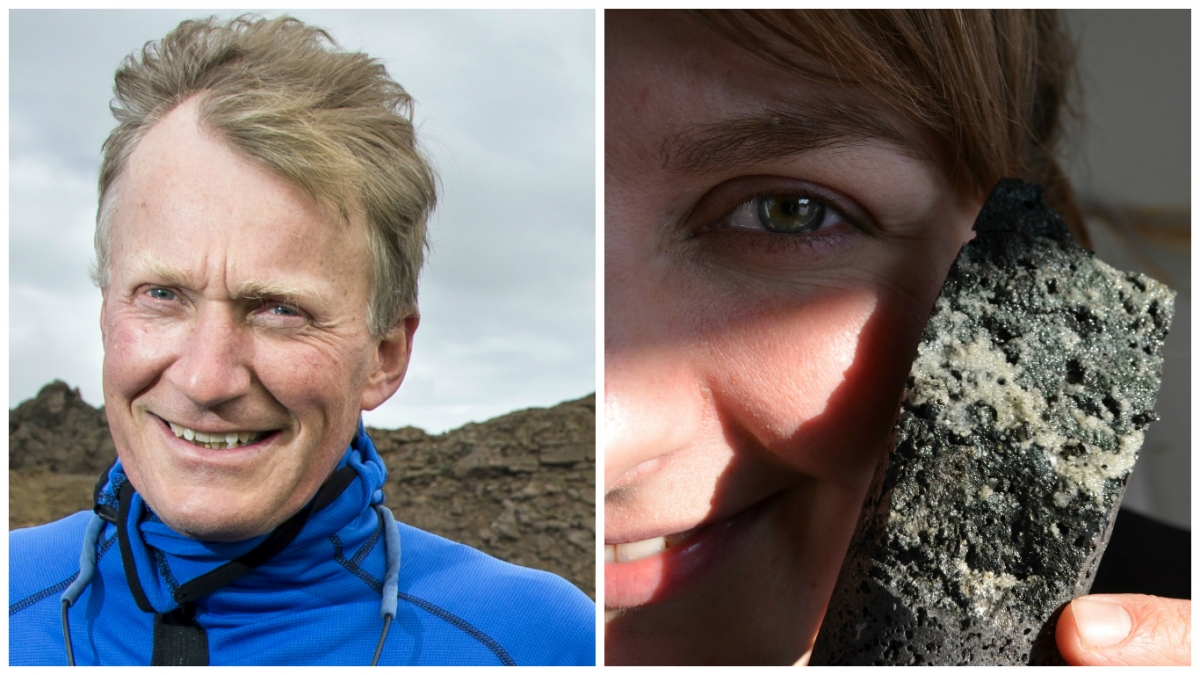The research of Icelandic scientists and their international collaborators shows that it is relatively easy to sequester carbon dioxide into basaltic rock. An experimental project in Hellisheiði geothermal power plant called CarbFix has revealed that it is possible to turn carbon dioxide into solid rock in two years; a process previously believed to take many thousands of years. This suggests that carbon dioxide can be sequestered in a safe and relatively simple manner. Carbon dioxide is one of the main trigger for global warming.
This is stated in the latest issue of Science magazine published on 10 June. The authors of the article, Rapid carbon mineralization for permanent disposal of anthropogenic carbon dioxide emission, are part of a research team working on turning carbon dioxide into basaltic rock. The group includes members from the University of Iceland, OR group, ISOR, Columbia University in New York, CNRS ín Toulouse, the University of Southampton, University College in London and the University of Copenhagen. The part of the research discussed in the article was led by Juerg Matter from Southampton University.
Sigurður Reynir Gíslason, Scientist at the Institute of Earth Sciences is one of the co-authors of the article in Science and has chaired the CarbFix science board from its foundation. Ten doctoral students from CarbFix have completed their projects, most from the University of Iceland. There are currently two students working on their thesis within the team. One of those is Sandra Ósk Snæbjörnsdóttir, who has a big part of the article published in Science.
From thousands of years down to two in Hellisheiði Plant
All of the earth's carbon begins and ends in rock. The carbon travels between the atmosphere, living creatures, soil, oceans and rock in the so-called carbon cycle. This cycle has, however, been upset by burning fossil fuel increasing carbon dioxide in the earth's atmosphere, which is considered one of the main reasons for global warming. One of the ways the researchers have examined to counteract this development is capturing the carbon created by emissions from power and industrial plants and pumping it deep into the basaltic rock. Such sequestration could decrease its impact on the climate. Carbon dioxide has for example been pumped into a sedimentary rock at the bottom of the North Sea from 1996. It is estimated that it takes tens of thousands of years for carbon dioxide to sequester the rocks that are found there, but carbon sequestration is the safest option. The authors of the article in Science demonstrate, however, how basaltic rock sequesters more easily with carbon dioxide where binding takes only approximately two years.
Basalt is the most common type of rock on the surface of the earth and makes up 90 percent of Iceland, according to CarbFix. The aim of CarbFix is to find a way to sequester carbon dioxide in the deep basalts in the vicinity of Hellisheiði Plant. Carbon dioxide is combined with water and sent hundreds of metres down into the volcanic basalts that make up so much of the North Atlantic island. Around 95% of the carbon dioxide pumped into the ground by Hellisheiði Plant is sequestered into minerals within two years. It is thus likely that the CarbFix method in carbon dioxide sequestration into solid rock is more effective than the previously known methods.
The article in Science can be accessed at the journal's website.
The results have drawn a great deal of attention and many of the major mass media have covered them including the Guardian, Washington Post, CNBC, New York Times which also covered the project extensively last year.




